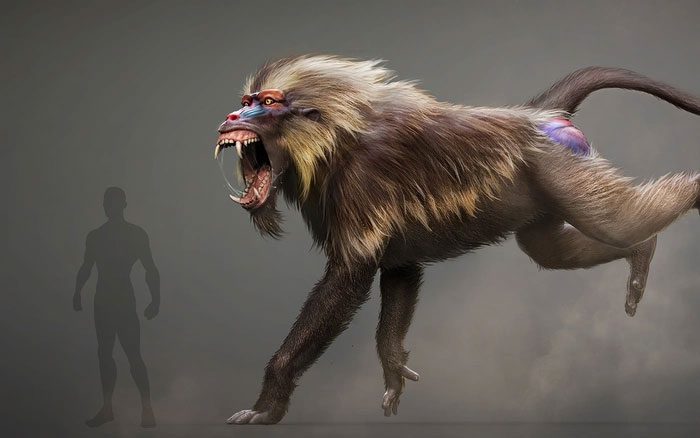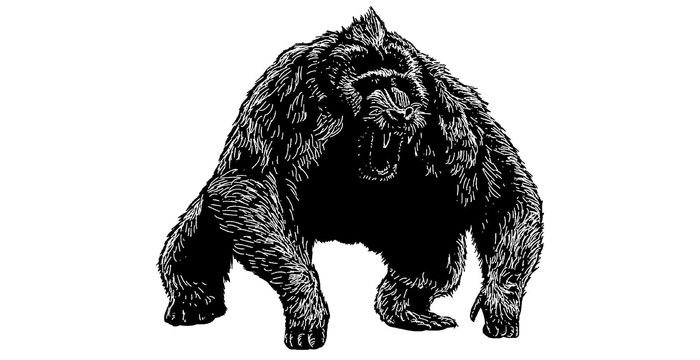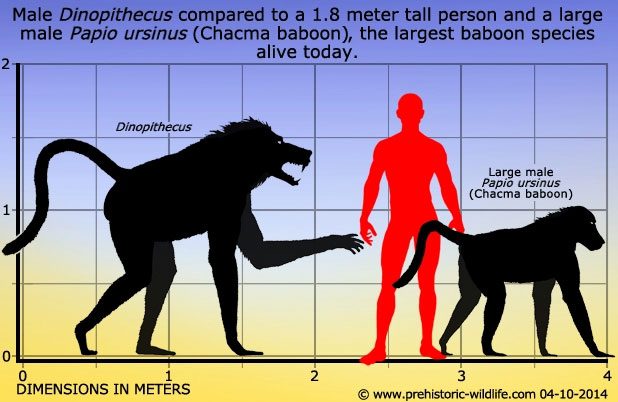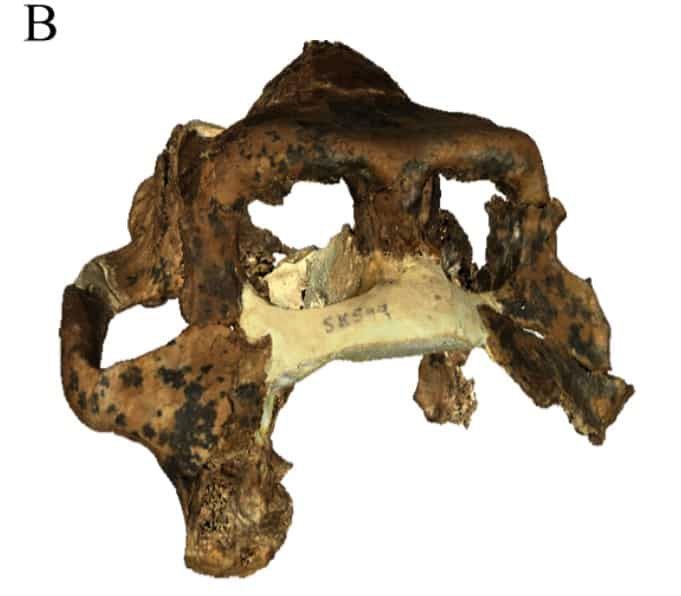This is an ancient species of gibbon weighing nearly 50 kg that once lived in Africa, particularly in South Africa and Ethiopia.
In the scientific community, there is much debate surrounding the evolutionary relationship between humans and monkeys. While humans share some characteristics with certain primates, there is no evidence to suggest that humans are descendants of them.
Furthermore, it is known that modern primates are not the same as those that existed thousands of years ago. Dinopithecus is one such species.


Dinopithecus is a giant extinct gibbon that lived during the Pliocene epoch in South Africa. Males stood an average of 5 feet (1.52 m) tall, and when upright, they could reach over 2 meters. Females averaged 4 feet (1.22 m) in height. It was officially described by Scottish paleontologist Robert Broom in 1937.
Dinopithecus is also known by another name, “terror gibbon.” They are a large extinct primate genus that existed from the Pliocene to the Pleistocene epochs. This gibbon species was distributed across Africa, particularly in South Africa and Ethiopia.
The terror gibbon is one of the largest primate species recorded in the world. Dinopithecus stood about 1.5 to 1.6 meters tall at the shoulder and weighed approximately 50 kg. In some cases, males were estimated to reach an adult weight of 77 kg.
Although the fossils found of this species are still incomplete, experts can still determine that this gibbon species was very large, much larger than many existing primates.
Their astounding size is the primary reason they are called terror gibbons. Because experts cannot assemble a complete fossil of this animal, their exact appearance is merely speculative and considered approximate.
While working to uncover all the details about the appearance and behavior of Dinopithecus, paleontologists have compared them to modern primates.
Like many modern gibbons, Dinopithecus is believed to have lived in groups of varying sizes, likely moving to different areas in search of food.

Dinopithecus is a very large extinct primate closely related to baboons that lived from the Pliocene to the Pleistocene in South Africa and Ethiopia. They were nearly twice the size of the largest living baboons. When researching Dinopithecus, researchers often look for a general comparison between them and modern baboons.
It is also believed that these gibbons spent a significant amount of time in caves, at least when they were not on the move. It is possible that they also spent some time in trees, but wherever they chose to be, they always had to stay near a water source.
Due to the many unknowns about this gibbon species, there is no conclusive information about their diet. Nevertheless, it is believed that this gibbon had a more varied diet compared to modern gibbons.
Additionally, studies of the teeth of this ancient gibbon indicate that their teeth were adapted for chewing coarse food. It is likely that these gibbons were omnivorous, consuming insects and other small animals.

Similar to modern baboons, Dinopithecus had the potential to live in groups that could number in the dozens. Baboons have also been recorded attacking large animals such as goats and sheep, so it is likely that Dinopithecus could have attacked large animals such as modern sheep and goats.
Further research on their teeth shows that these gibbons had a diverse diet, although their digestive system could process both plant material and small animals. However, it seems that these gibbons preferred fruit over leaves.
Due to their genetic structure, Dinopithecus exhibited more prominent characteristics than modern gibbons. The most apparent difference between the two lies in their size.
Most of the time, gibbons consume plant material, although they sometimes eat small animals or insects to round out their diet. For instance, gibbons eat a lot of fruit but also consume leaves, flowers, and insects. However, Dinopithecus is thought to have consumed significantly smaller animals compared to modern gibbons.
Nevertheless, one common feature of all gibbon species is that they prefer to live in small family groups of two to six individuals. Chimpanzees are the most social of all primates, living in communities ranging from 15 to 120 individuals, while gorillas live in family groups that can have up to 30 members.
It is believed that Dinopithecus became extinct between 2.58 million and 11,700 years ago during the Pleistocene epoch. Although experts have yet to identify the primary cause of their extinction, climate change is thought to be one of the main contributing factors.


















































